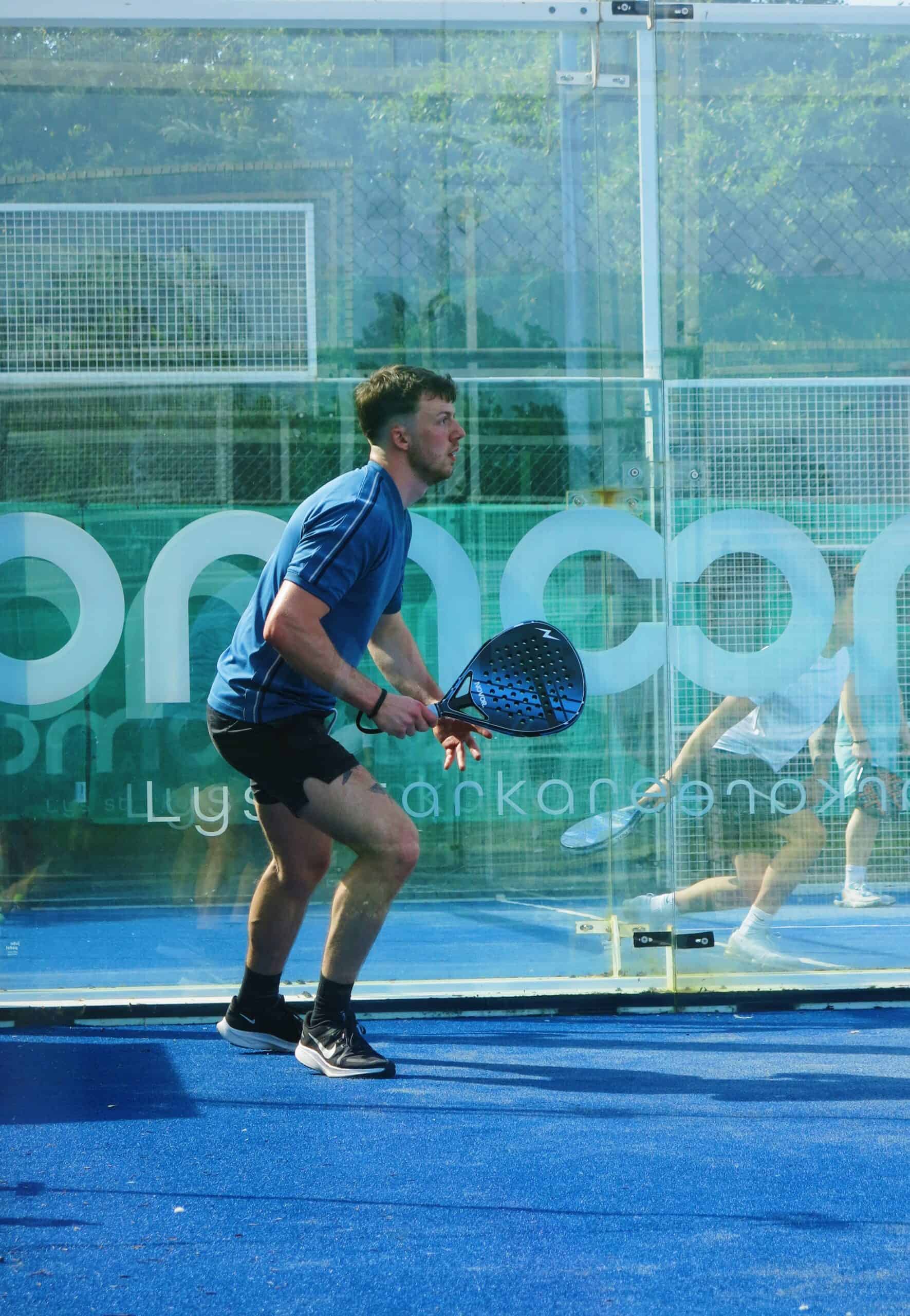
Tennis elbow! Padel, which is the fast-paced racket sport with similarities to both squash and tennis, has been gaining popularity across the UK. However, with the intensity of the game can come some risk of injuries, and one concern is tennis elbow. Tennis elbow, despite its name, can affect anyone engaging in repetitive arm movements, including padel tennis player. In this blog, we will go over the top 7 ways explore the effective strategies to prevent it while enjoying your game.
Tennis elbow, which is medically known as lateral epicondylitis, is a painful condition that occurs when the tendons on the outer side of the elbow are overloaded due to repetitive motion or overuse, which can be common amongst regular padel players. Despite the name, this injury is not exclusive to tennis players and can impact individuals participating in various racket sports, including padel.
1. Proper Warm-up and Stretching:
Before going into an intense padel match, it’s crucial to prepare your muscles and joints through a comprehensive warm-up routine. Focus on dynamic stretches that specifically target the forearm, wrist, and elbow. Warming up increases blood flow to these areas, enhancing flexibility and reducing the risk of injuries such as tennis elbow.
2. Technique:
Paying attention to your padel playing technique is a fundamental aspect of injury prevention. Incorrect strokes and movements can put unnecessary stress on your forearm tendons, leading to overuse injuries like tennis elbow. Consider taking lessons from a qualified coach to ensure your technique is efficient as possible. Our news and insights page also contains blogs which help breakdown how to improve your technique for a few different type of padel shots!
3. Appropriate padel racket:
The right equipment can make a significant difference in injury prevention. Choose a padel racket that suits your playing style and grip size. A racket with proper shock absorption features can help reduce the impact on your forearm, decreasing the risk of developing tennis elbow.

4. Strength Training:
Incorporating strength training exercises into your fitness routine can help strengthen the muscles surrounding your elbow. Focus on exercises that target the forearm, wrist, and shoulder muscles. This added strength provides better support to your joints and minimises the strain on the tendons, which will reduce the likelihood of tennis elbow.
5. Balanced Playing Schedule:
Overtraining is a common cause of overuse injuries like tennis elbow. Ensure that you maintain a balanced playing schedule which will allow for enough time for rest and recovery. Avoid playing through persistent pain, as this may exacerbate the condition. Listen to your body and give it the necessary time to heal.
6. Ice and Compression:
In case you experience any discomfort or mild pain, immediately apply ice to the affected area. Ice helps reduce inflammation and helps ease any pain. Consider also using a compression bandage to provide additional support and limit swelling.
7. Regular Physiotherapy:
Regular visits to a physiotherapist can be invaluable in preventing and managing tennis elbow. A physiotherapist can assess your joints, provide targeted exercises and offer advice on injury prevention tailored to your individual needs.
While padel is a fantastic sport for fitness and recreation, the risk of tennis elbow should not be overlooked. By using these preventive measures, it can significantly reduce the likelihood of developing this painful condition. By prioritising proper warm-up, refining your technique, using a good padel racket, incorporating strength training, maintaining a balanced playing schedule, and seeking professional guidance when needed, you can continue enjoying padel without the fear of tennis elbow hampering your game.
Managing Director
We’re dedicated to upholding the highest standards of customer service and delivering on providing premium padel rackets. Please explore our extensive list of reviews to see what our customers have to say!
Super, top quality gear and a super helpful team. Have definitely secured my future business. 🤩
I had the chance to try the Novor padel racket last weekend and I was very surprised with the quality, weight and it’s balance distribution. Very good relation price quality and highly recommended. Very good effort and work developing their first official product by the guys of Novor!
What a stunning racket. Very good price, especially for a carbon racket, delivered in 2 days, comes with a nice bag. Beautifully designed and made, looks the business and feels very nicely weighted. Can't fault it. I just need to get better at the game to justify having such a nice piece of kit!

Elevate your padel game with Novor – Precision | Power | Performance. Unleash your potential with our padel rackets designed in London.
VirtualRock Ltd trading as Novor (™) 2023 . All Rights Reserved